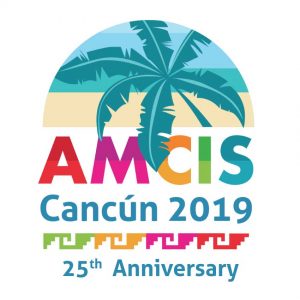Abstract
The ability to apply material taught in the classroom to a real-world scenario is critical to the student’s success in their future career. In the class, Digital Solutions Studio, faculty provide students with just that opportunity. In the world of Information Systems, one of the tools for success is the ability to speak to a client or employer in a functional manner, while relaying the technical requirements of a project to the systems architect in order to build a working product. In Digital Solution Studio classroom, students are first taught the framework of the core requirements components, including: requirements gathering, business rule creation, stakeholder analysis and persona development and database design. These concepts are distilled through both lecture and hands on application of the material through various in class activities. While the students are learning these concepts, a live client is introduced to the cohort to actually apply the learning materials. Through a series of student led interviews, the class gathers information on project requirements, stakeholder needs and business rules that will guide the use of the client’s requested project. Students are pre-assigned into teams of 6 and each team is given a prompt from the client and, throughout the remainder of the semester, develops a solution, including a prototype, to meet the needs of the client. At the close of the semester, students develop a “pitch deck” and each team presents their solution to the client in a showcase of presentations. The client plays an integral role in this process, providing students with feedback and critique. In many cases, there are students hired as interns to work for the client and implement the solution they have developed. Students are evaluated based on their development of the project from requirements gathering through presentation. Previous clients have included startups, grant funded platforms and socially conscious organizations. In the student feedback provided at the end of the semester, many students comment on how thoroughly they enjoyed working with a live client and how it helped deepen their understanding of the bridge required between the technical and functional branches of an organization. In this TREO talk, I propose to showcase the core requirements component framework discussed in class and how concepts are applied with a live client, utilizing one of our recent projects (created by the students) as the backdrop for the presentation.
Recommended Citation
Lavin, Amy, "Innovation in the IS Classroom: Live Clients in the Classroom" (2019). AMCIS 2019 Proceedings. 55.
https://aisel.aisnet.org/amcis2019/treo/treos/55
Innovation in the IS Classroom: Live Clients in the Classroom
The ability to apply material taught in the classroom to a real-world scenario is critical to the student’s success in their future career. In the class, Digital Solutions Studio, faculty provide students with just that opportunity. In the world of Information Systems, one of the tools for success is the ability to speak to a client or employer in a functional manner, while relaying the technical requirements of a project to the systems architect in order to build a working product. In Digital Solution Studio classroom, students are first taught the framework of the core requirements components, including: requirements gathering, business rule creation, stakeholder analysis and persona development and database design. These concepts are distilled through both lecture and hands on application of the material through various in class activities. While the students are learning these concepts, a live client is introduced to the cohort to actually apply the learning materials. Through a series of student led interviews, the class gathers information on project requirements, stakeholder needs and business rules that will guide the use of the client’s requested project. Students are pre-assigned into teams of 6 and each team is given a prompt from the client and, throughout the remainder of the semester, develops a solution, including a prototype, to meet the needs of the client. At the close of the semester, students develop a “pitch deck” and each team presents their solution to the client in a showcase of presentations. The client plays an integral role in this process, providing students with feedback and critique. In many cases, there are students hired as interns to work for the client and implement the solution they have developed. Students are evaluated based on their development of the project from requirements gathering through presentation. Previous clients have included startups, grant funded platforms and socially conscious organizations. In the student feedback provided at the end of the semester, many students comment on how thoroughly they enjoyed working with a live client and how it helped deepen their understanding of the bridge required between the technical and functional branches of an organization. In this TREO talk, I propose to showcase the core requirements component framework discussed in class and how concepts are applied with a live client, utilizing one of our recent projects (created by the students) as the backdrop for the presentation.


